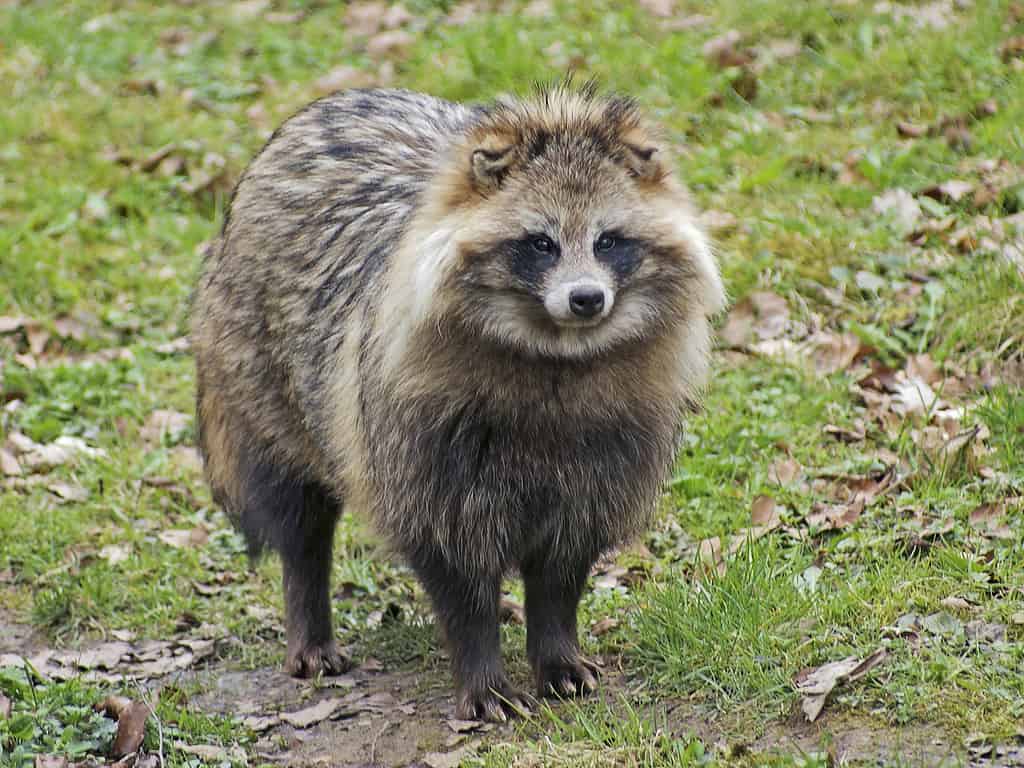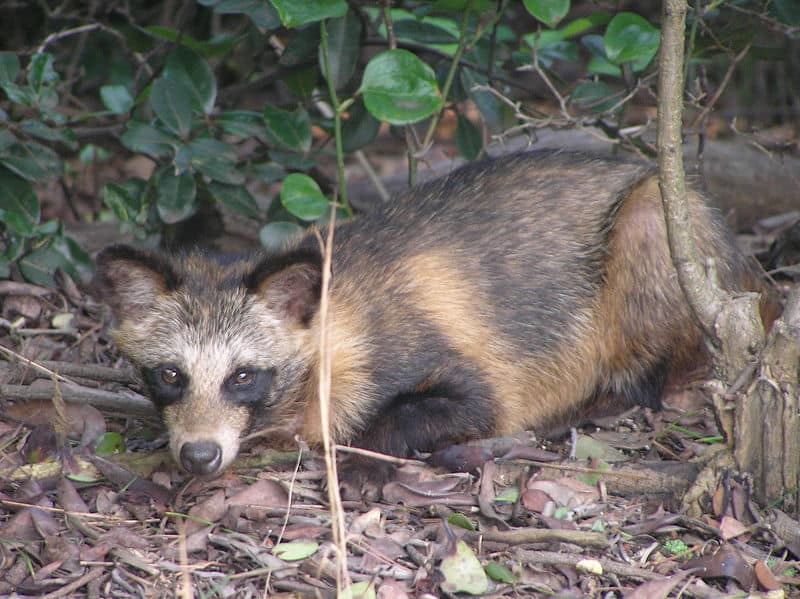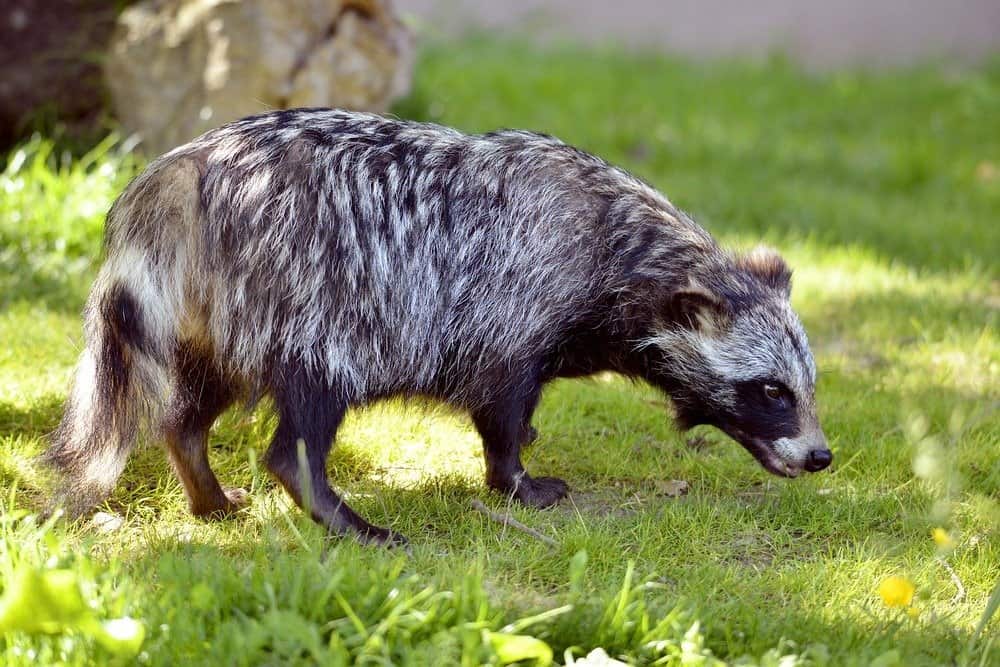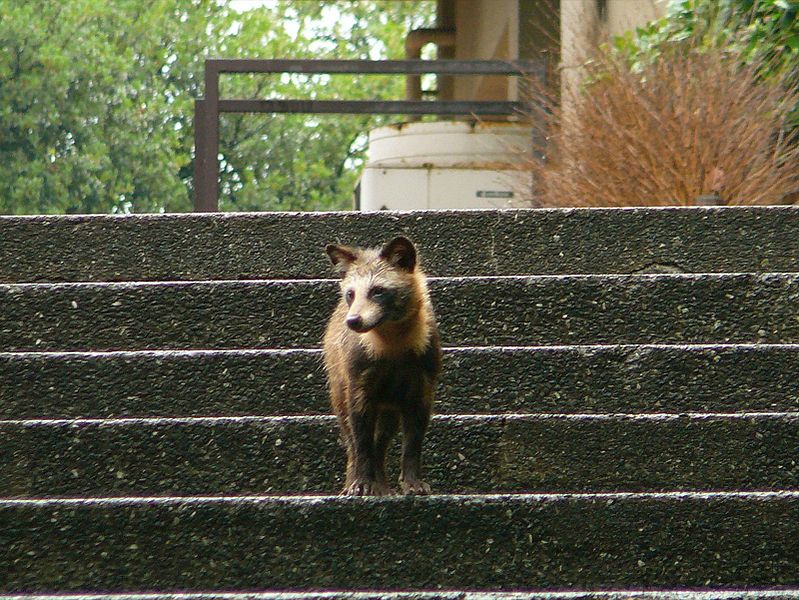You’re probably familiar with the sneaky neighborhood trash panda (also known as the raccoon). But have you met the creature that shares a name with this well-known dumpster diver? The raccoon dog is a lesser-known animal that isn’t actually related to the raccoon. So, what are raccoon dogs? Let’s take a look.
What Are Raccoon Dogs?

There are two species and four subspecies of raccoon dog.
©Achim Prill/iStock via Getty Images
Raccoon dogs get their name from their raccoon-like facial markings. However, while these animals may resemble raccoons, they are quite different. While the common raccoon is a member of the Procyonidae family, the raccoon dog falls in the Canid family and is more closely related to a fox than a raccoon.
Slightly bigger than red foxes, raccoon dogs weigh 9-20 pounds. They stand around 15-20 inches at the shoulder and have a body length of 20-27 inches, with a 4–7-inch tail. The robust brownish-gray animals are similar in color to raccoons and share the raccoon’s thick coat, but they have a heavy body and short legs.
Raccoon dogs belong to the genus Nyctereutes and are the only extant species in the genus. There are two types alive today: The common raccoon dog (Nyctereutes procyonoides) and the Japanese raccoon dog (Nyctereutes viverrinus). The species are similar in appearance, though the Japanese variety (also known as the tanuki) has a smaller stomach and shorter fur.
Habitat

These animals do not dig their own burrows but will repurpose burrows made by other creatures.
©Prue Simmons / CC BY 2.0 – License
The common raccoon dog is native to East Asia. They were also introduced to Europe and Russia in the early 1900s for the fur trade and are now an invasive species throughout the region. The tanuki is endemic to Japan. Their primary habitats are temperate forests and grasslands, but they can also be found in urban areas and farmlands. They prefer to be close to water sources and often live near rivers or lakes. These shy animals like areas with thick vegetation where they can stay out of sight.
Diet

They are curious but shy animals.
©Stanislav Duben/Shutterstock.com
Like the regular raccoon, raccoon dogs are omnivores. They are excellent climbers, and often climb trees to search for food such as berries or nuts. Raccoon dogs are also skilled swimmers and dive under the water in search of frogs, fish, crabs, and other aquatic foods. They are opportunistic scavengers that also eat birds, plants, lizards, snakes, and insects. Like the raccoon, this canid will raid garbage cans in search of food discarded by people.
Behavior

Unlike other members of the family, these chunky canids have thick bodies.
©Miroslav Hlavko/Shutterstock.com
Primarily nocturnal, raccoon dogs are most active at night. Along with the gray fox, they are one of only two canid species that can climb trees thanks to their curved claws. They are also the only canid species that enter torpor. In the fall, they eat heartily to up their fat levels to help them survive their three-month torpor period.
Torpor generally begins in December and runs through February. During this period, their metabolism decreases by 25-50% to conserve energy. While many references to raccoon-dog torpor call it hibernation, they are not true hibernators as they will wake up to forage on warm days. Some tanukis in warmer climates do not enter torpor at all.
Raccoon dogs are highly social animals and communicate through vocalizations that sometimes resemble the yowls of a domestic cat. Unlike other canid species, they do not bark. They usually mate for life and live in monogamous pairs or small groups. Pairs den together in winter and work together to raise the young. They are devoted families and males will deliver food to their pregnant mates. On average, raccoon dogs live six to seven years in the wild.
Conservation Status

The animal’s fluffy fur has even been found in “faux fur” garments.
©Christian Musat/Shutterstock.com
Raccoon dogs are considered to be a species of least concern regarding population according to the International Union for Conservation of Nature (IUCN). They have a wide distribution across their territory. The raccoon dog population is also stable. However, they are commonly bred for use in the fur trade. These animals spend their entire lives in cages before being killed for their pelts for use in the garment industry, as well as for calligraphy brushes.
Raccoon Dogs in the News
The raccoon dog made headlines in 2023 after scientists hypothesized that the COVID-19 pandemic may have been linked to the animal. Genetic samples from a market in Wuhan, China where raccoon dogs were sold tested positive for the coronavirus. Since these canids can transmit the virus, questions arose regarding whether this was the animal vector that spread the virus to people. However, ultimately there was no definitive evidence linking the virus to the animals (though it did skyrocket Google searches for the species!).
The tanuki is also common in Japanese folklore and current pop culture. A tanuki (“Tom Nook”) is a recurring character in the Animal Crossing video game. In Nintendo’s Super Mario Bros. franchise, Mario’s powerup outfit that allows him to fly and spin his tail is called the “tanuki suit.” Most depictions of tanuki in pop culture stem from Japanese-originating materials and are often misidentified in other countries as just being raccoons.
The photo featured at the top of this post is © sduben/iStock via Getty Images
Thank you for reading! Have some feedback for us? Contact the AZ Animals editorial team.







